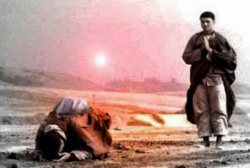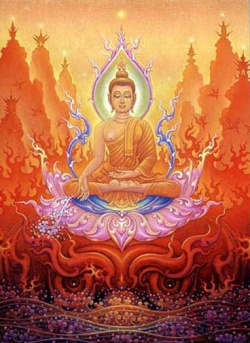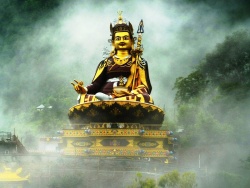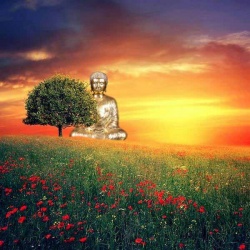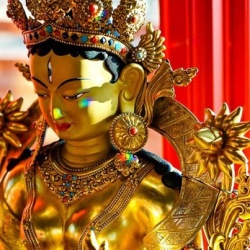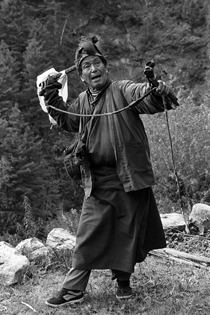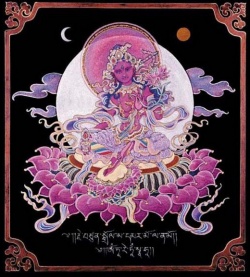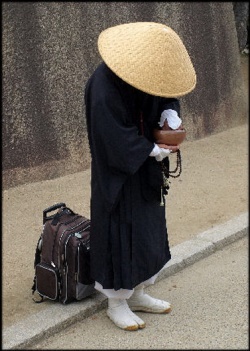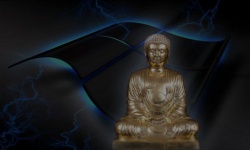About Jodo Shinshu Buddhism
JODO SHINSHU
Jodo Shinshu, literally meaning True Pure Land Denomination was founded by Shinran Shonin. It is also often called Shin Buddhism.
The accepted date of the founding of the denomination is 15th April 1224, when the first draft of Shinran Shonins most important book Teaching, Practice, Faith, and Attainment (Kyogyoshinsho) was completed.
SHINRAN SHONIN
Shinran Shonin was born on 21st May 1173 (1st day of 4th month, 3rd year of Joan) in the village of Hino on the outskirts of Kyoto.
When he was four years old, he lost his father and at the age of nine his mother.
Thus, orphaned at a young age he entered the priesthood at Mount Hiei, which was then the main center of Buddhist learning.
Here he was to stay for twenty years, practicing the most arduous of physical and mental disciplines.
The principal teaching of the monasteries emphasized the purification of the self for the attainment of Enlightenment.
Never did a young priest apply himself so wholeheartedly to all the disciplines. He soon became renowned for his scholarship and could have easily become head of one of the larger monasteries, but he was neither interested in position nor in the pursuit of knowledge.
His main concern was Enlightenment. After two decades on Mt. Hiei, Shinran Shonin came to the sober realization that Enlightenment was impossible for the common man.
The disciplines of Mt. Hiei made him acutely conscious of his own human weakness. His life was finite; his knowledge incomplete and his capacity for perfect goodness limited.
Upon meditation he discovered that in all his activities the Three Poisons of greed, hatred and anger essentially motivated him.
In this state of mental anguish, Shinran Shonin renounced the life on Mt. Hiei.
His descent form the mountain was the turning point in his religious pursuit.
Shortly thereafter, he met a kindly priest, Honen shonin, who taught a single faith in Amida Buddha and the recitation of the Nembutsu as the very way of religious fulfillment.
Honen shonin brought Shinran Shonin face-to-face with Amida Buddhas infinity Wisdom and Compassion.
For the first time in his life Shinran Shonin found inner peace in the faith that Amida Buddha was primarily concerned with such as person as him.
The Buddhist life he realized he could be lived by the man in the street without confinement to a monastery.
The gate of lifes meaning was now open to all and thousands of people flocked to hear and accept the hopeful message of the Nembutsu.
The powerful monastic orders, however, feared a weakening of their long established tradition and prestige and convinced the Imperial Court to banish Honen shonin and Shinran Shonin,
but the spiritual energy of the Nembutsu had been unleashed. The teaching soon gathered momentum as it spread from person to person and from village to village.
Especially, during his years in exile, Shinran Shonin personally met with countless persons to awaken their faith in Amida Buddha.
Shinran Shonin finally settled in Inada and there completed the first draft of the Teaching, Practice, Faith and Attainment in 1224.
In 1232 when he was fifty-nine, he retired to Kyoto.
During the intervening years until his death, he wrote many books, which are read and studied even today. He died on 16th January 1263 (28th day of 11th month, 2nd year of Kocho).
TEACHING, PRACTICE, FAITH AND ATTAINMENT
Shinran Shonin never claimed that he was founding a new religion.
He was merely stating the true purpose of Sakyamuni Buddhas advent on earth, which was to awaken mankind to the Wisdom and Compassion of Amida Buddha.
After Sakyamuni Buddhas Nirvana, seven patriarchs transmitted the heart of Amida Buddha over the centuries.
They were Nagarjuna, Vasubhandhu, in India; Donran, Doshaku and Zendo in China and Genshin and Honen in Japan.
In the Teaching, Practice, Faith and Attainment Shinran Shonin quoted from the various Sutras and writings of these patriarchs to support his faith in Amida Buddha.
THE THREE SUTRAS
From the voluminous Buddhist Tripitaka Shinran Shonin selected the following Three Sutras that bring us directly to the heart of Amida Buddha.
1. The Larger Sutra on the Eternal Life.
In this sutra Sakyamuni Buddha tells the Sangha about Amida Buddha.
2. The Meditation Sutra on the Eternal Buddha. This sutra shows the actual case of Queen Vaidehi who finds salvation through Amida Buddha.
3. The Smaller Sutra on Amida Buddha. This sutra describes the beauty of the Pure Land and extols the virtues of Amida Buddha.
THE THREE-FOLD BODY OF BUDDHA
Trikaya, meaning Three Bodies, is not three separate bodies but three aspects of the one body of Buddhahood.
Buddha as Dharmakaya (Body of Truth) resides in everything.
The Dharmakaya is impersonal law, principle, ultimate reality the Truth of the Universe.
It is indescribable and inexpressible.
The Buddha as Sambhogaka (Accommodated Body) is personal and appears before our religious awareness as Amida Buddha of Wisdom and Compassion.
Buddha as Nirmanakaya (Manifested Body) refers to the historical Buddha Sakyamuni who appeared on earth 2500 years ago.
In Jodo Shinshu the object of worship is Amida Buddha.
Amida Buddha is depicted artistically as an active Buddha in a standing position, hands held up in a gesture of bestowing blessings on all beings and leaning slightly forward symbolizing the eternal activity of Wisdom and Compassion.
The Primal Vow of Amida Buddha promises Universal Enlightenment for all beings.
In all the religions of the world there is no vow that has such a sweeping power, promising hope and lifes fulfillment to all human beings as well as all living things.
The all compassionate activity of Amida Buddha will never cease as long as beings are lost, forlorn, suffering or wandering in a meaningless existence.
NAME
The Name is Namo Amida Butsu, literally meaning I place my faith in Amida Buddha.
The power of universal salvation consummated by Amida Buddha is embodied in this sacred name, which is easy to keep in our minds as well as easy to recite.
Amida Buddha communicates with us through his Name. The Name has three aspects. Its substance is perfect in virtue and ultimate value that Amida Buddha was able to perfect on our behalf. It possesses the absolute power to save all sentient beings.
Its form is two-fold: it is Amida Buddhas voice calling to us and at the same time it is our vocal response to His call.
Its meaning is the actualization of our salvation and complete assurance of our Enlightenment.
Thus whenever there is Namo Amida Butsu, there is Amida Buddha and wherever there is Amida Buddha, there is Namo Amida Butsu.
FAITH
When we truly hear the Name, Faith is awakened in our hearts.
Hearing the Name is not merely hearing the sounds of Namo Amida Butsu, but hearing Amida Buddha with our whole being, calling us to throughout timeless time.
Thus, when we hear Amida Buddhas voice in our innermost being, faith is awakened.
We now realize that this faith itself and even the power to awaken it is a gift from Amida Buddha.
Faith completes our Oneness with Amida Buddha and is the true cause of our Enlightenment.
RECITATION OF THE NAME
The Awakening of faith naturally prompts a response to Amida Buddha.
This is the Nembutsu of gratitude to Amida Buddha for salvation that is assured.
Those who recite the Nembutsu in faith have attained the ranks of the truly assured. Such persons live the life of Nembutsu.
PURE LAND
Absolute Enlightenment is attained in the Pure Land after death when all the finite, limited qualities of the physical being are extinct.
While the human weakness of greed, anger and ignorance are still functioning the perfection of personality is impossibility.
Birth in the Pure Land means becoming a Buddha and achieving perfect Oneness with Amida Buddha.
We are thus identified totally with Amida Buddhas Wisdom and Compassion.
This Oneness is not a static end itself, for True Wisdom-Compassion is an active, moving spiritual force.
So long as there is suffering and ignorance in the Universe the power of compassion will never cease its work of mercy.
Thus we, who become one with Amida Buddha in the Pure Land, will return repeatedly to this shore of suffering for the salvation of all beings.
Shinran Shonin said,
Though I, my life having run its course,
Return to the Pure Land of Eternal Rest,
Come back shall I to earth again and again,
Just as the waves of Wakano-Ura Bay.
When alone you rejoice in the Sacred Teachings,
Believe that there are two,
And when there are two to rejoice,
Believe that there are three,
That other shall be Shinran.
The Pure Land ideal is the culmination of the teaching of Compassion and Wisdom.
THE PURPOSE OF LIFE
While the ultimate objective of life in Jodo Shinshu lies in the achievement of Buddhahood, lifes immediate purpose is realized in the awakening of faith. In this religious experience we know that we now live in Amida Buddhas Light.
This is the spiritual state Shinran Shonin called the ranks of the truly assured.
The recitation of the Nembutsu Namu Amida Butsu flows naturally and clearly as waters from a mountain spring.
The life of faith has achieved a high lever of internal organization.
It will have developed the wisdom and the insight to understand the changing wisdom and the insight to understand the changing circumstances of life.
Even under adverse conditions a man of faith will be strong because his inner conviction is strong.
He has gained a new vision and dimension in his life. Because his spiritual roots reach down into the Compassion of Amida Buddha, his taste of life is inexpressibly sensitive.
His religious acts are performed out of gratitude to Amida Buddha. He asks nothing of Amida Buddha but dedicates his whole being to him.
- by Rev Kenryu Tsuji, Buddhist Churches of America
The Essentials of Jodo Shinshu (Shinshu Creed)
NAME: Jodo Shinshu Hongwanji-ha
FOUNDER: Kenshin Daishi Shinran Shonin (1173-1263)
BUDDHA: Amida Buddha (Buddha of Infinite Light and Life)
SUTRA: Three Principal Sutras of Jodo Shinshu:
1. Larger Sutra on the Buddha of Infinite Life
2. Sutra of Meditation on the Buddha of Infinite Life
3. Smaller Sutra on the Buddha of Infinite Life
TEACHING: Having awakened to the compassion of Amida Buddha and rejoicing in the assurance of Buddhahood, we shall endeavor to live the life of gratitude and service.
TRADITION: The Hongwanji is a community of people joined together by the gladness of receiving the Shinjin of Amida Buddha.
As Jodo Shin Buddhists, we shall seek to be humble and sincere in words and in deeds, to be responsible citizens of our society and to share with others the teachings of Jodo Shinshu.
Understanding fully the principle of causality, we shall not practice petitionary prayer and magic, and do not depend on astrology and superstitions.
